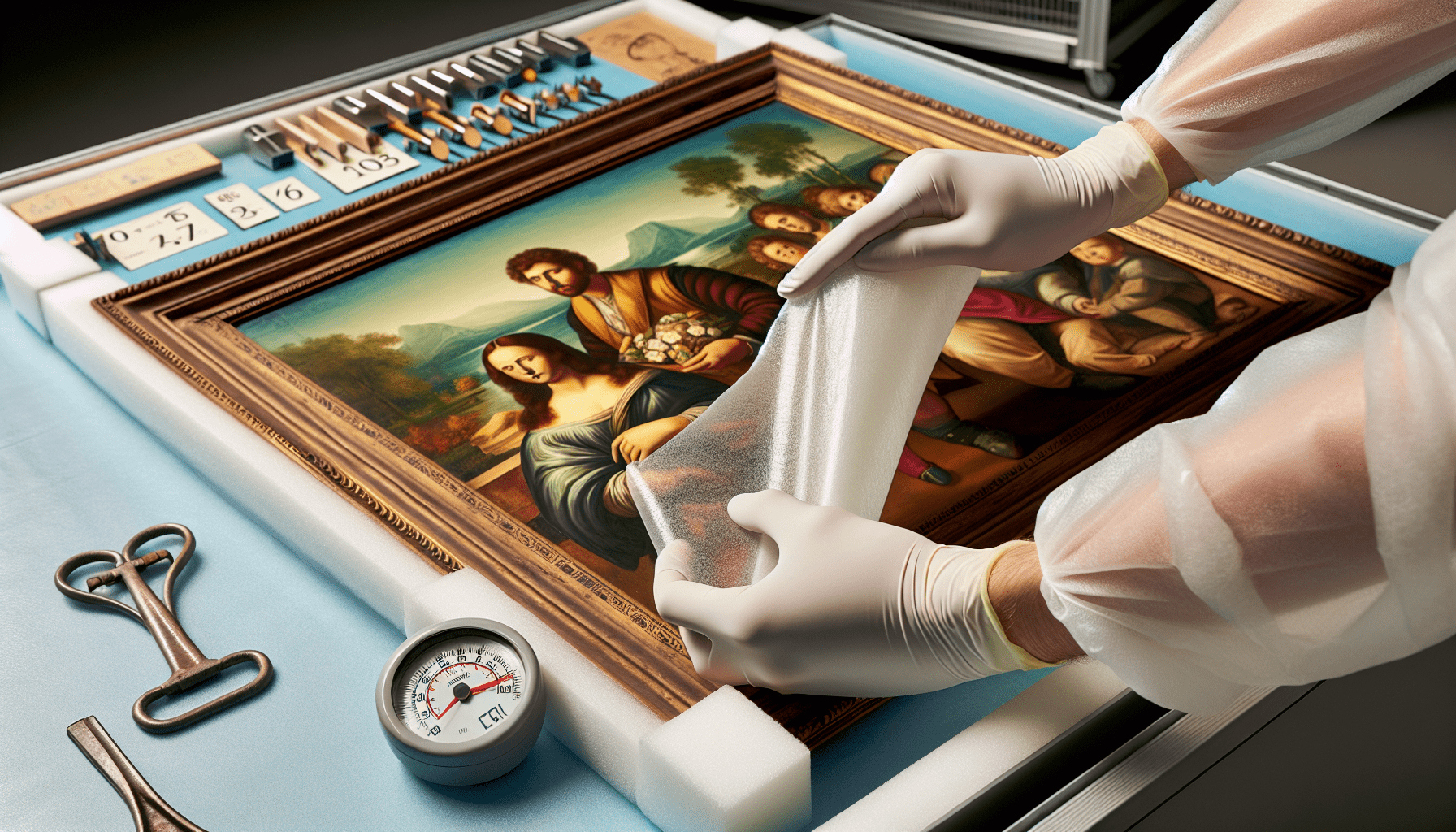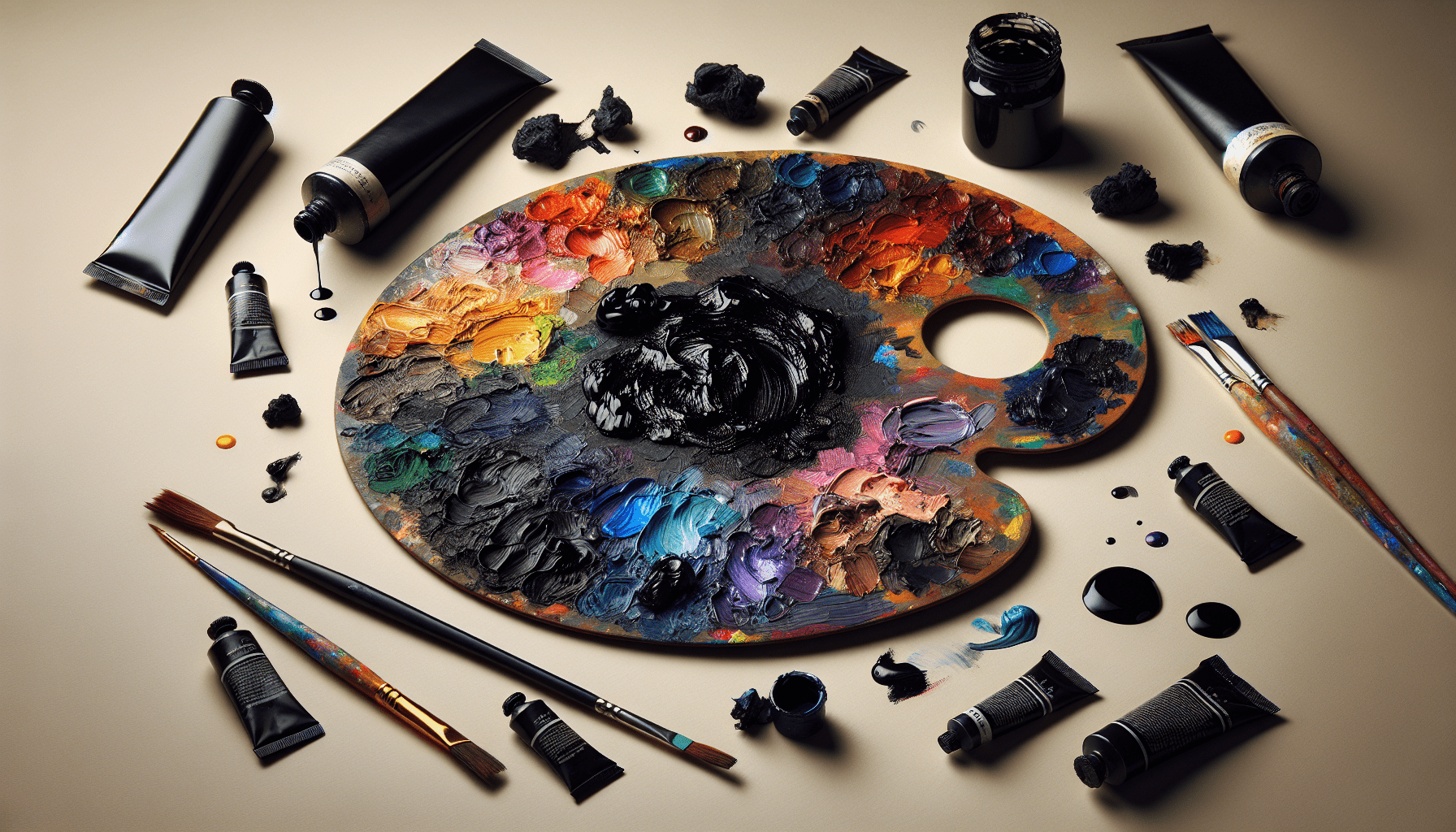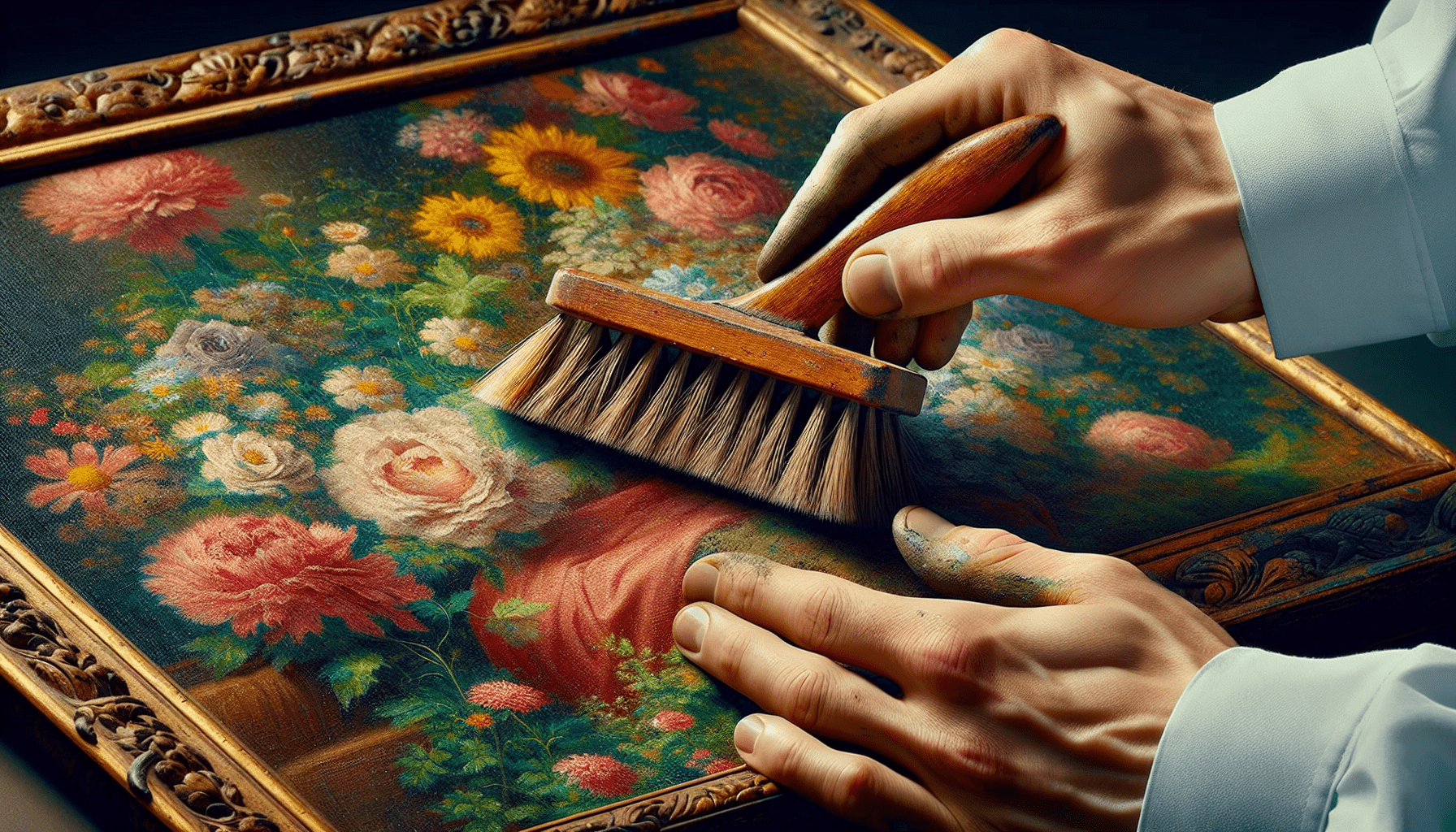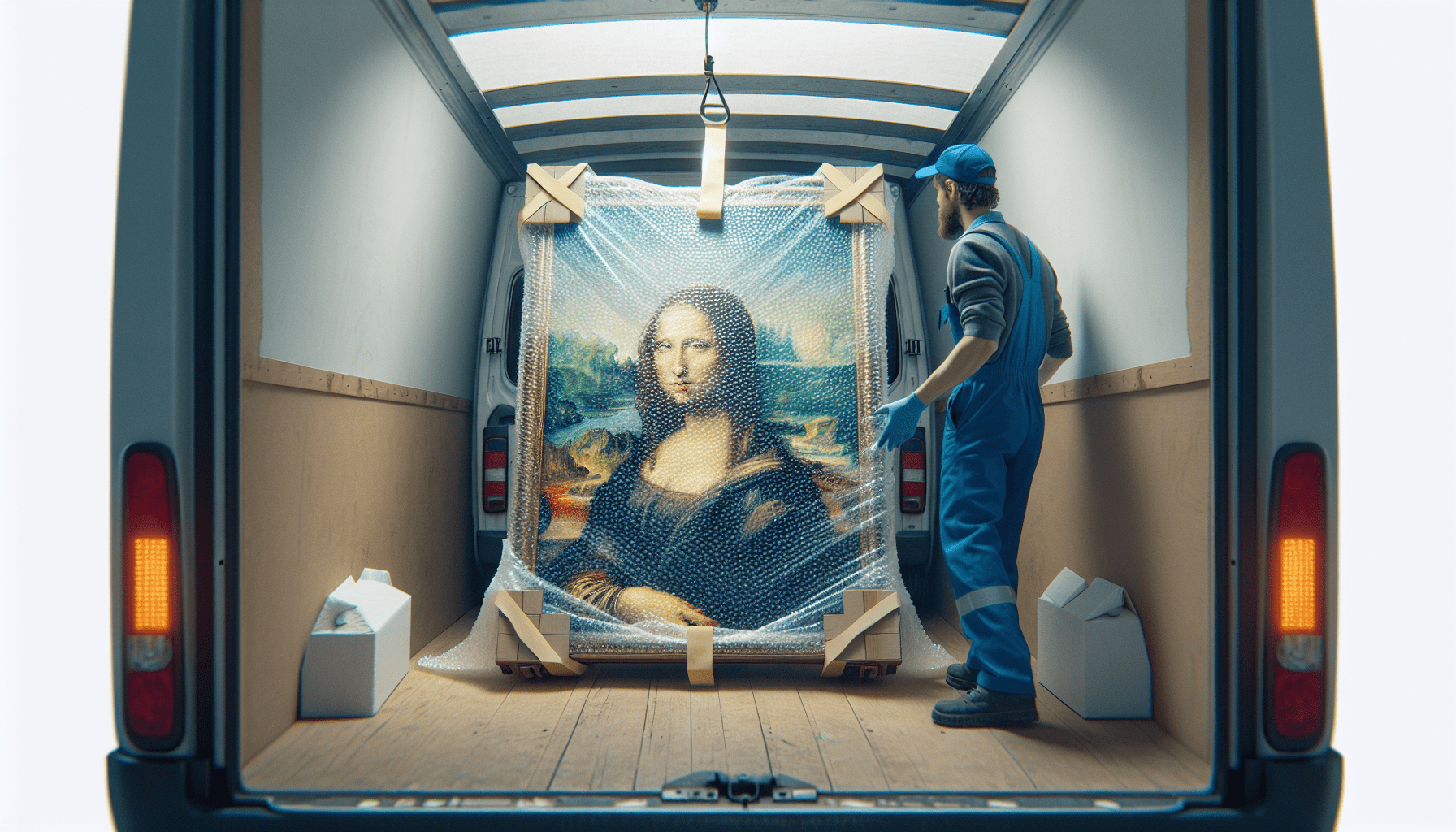Safeguarding your cherished oil paintings is no small feat; it demands a journey of meticulous preparation, extensive knowledge and a deep understanding of proper preservation techniques. “How to Store Oil Paintings” is an insightful guide that enlightens you on the critical steps to consider, offering expert tips on protecting your artworks from potential damage. This article equips you with the best advice on how to prolong the life and lustre of your oil paintings, ensuring they remain as vibrant and striking as the day they were created.
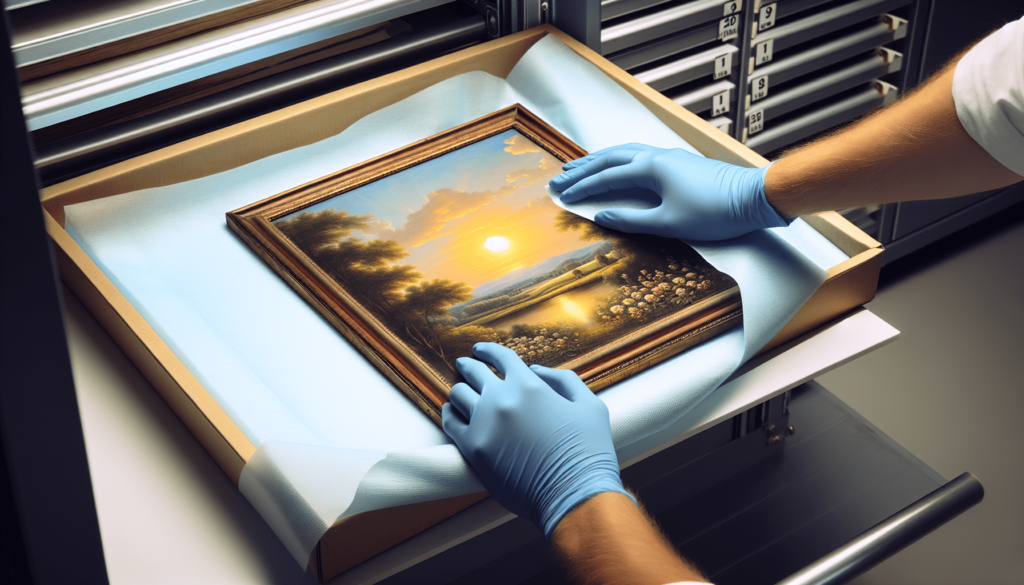
Choosing the Right Location
The choice of location is fundamental when storing your oil paintings. You should ensure that the paintings are kept in a cool and dry area. Temperature and humidity variations can cause the oil paintings to crack or peel over time.
Find a cool and dry area
For optimal preservation, look for a space that’s both dry and maintains a moderate temperature throughout the year. This type of environment reduces the risk of your painting being damaged by mold and mildew growth, which thrive in moist, warm settings.
Avoid areas with direct sunlight
Direct sunlight can cause paintings to fade. As a precaution, keep your oil paintings out of areas that receive harsh sunlight. UV rays can severely damage the paint, causing it to discolor and break down over time.
Ensure good air circulation
Good air circulation prevents the accumulation of dampness and discourages the growth of mold and mildew. Hence, avoid storing paintings in confined spaces like attics or basements unless they have been modified to allow for proper ventilation.
Preparing the Paintings
Preparation of your oil paintings for storage involves cleaning, checking for damages, and repairing them if necessary.
Clean the surfaces of the paintings
Before storing, ensure that the painting’s surface is clean. Use a soft-bristle brush to gently remove any dust or dirt on the paint layers. Avoid using chemical cleaners that could potentially damage the paint.
Check for any damage or flaking
Inspect the paintings thoroughly for any signs of damage or flaking. Remember, early detection is key in preventing further damage.
Repair any damages if needed
If you notice any damages, consider seeking professional help depending on the severity. Small surface issues may be fixed yourselves, but major damages like deep cracks or flaking require expert attention.
Apply a protective varnish
Lastly, apply another layer of protective varnish to the painting. A protective varnish serves as a barrier to external elements that can potentially harm the painting.
Proper Handling and Transport
Handling and transporting your oil paintings need extreme care. Ensure to wear clean gloves and use acid-free materials for wrapping.
Wear clean gloves
When handling oil paintings, always wear clean gloves. This habit minimizes the risk of oils, dust, or other residues from your hands transferring to the paintings.
Use acid-free tissue paper for wrapping
When wrapping oil paintings for transportation or storage, use acid-free tissue paper. This material doesn’t contain harmful acids that could deteriorate your painting over time.
Carefully place paintings in padded bags or boxes
Place the wrapped paintings in padded bags or boxes that are sturdy enough to carry them safely. Ensure to choose the right size to avoid compressing the paintings.
Avoid stacking or placing heavy objects on top
Never stack your oil paintings or place heavy objects on top of them. Such practices could result in unnecessary pressure, leading to potential damage.
Framing and Mounting
When it comes to framing and mounting the paintings, remember to use acid-free mats and archival mounting materials.
Choose appropriate frames
The frame you choose for an oil painting should both enhance its aesthetic appeal and provide protection. Ensure that the material of the frame is unable to react with the oil paint.
Use acid-free mats
If you decide to use mats, ensure they’re acid-free. Acidic mats can contribute to the discoloration and deterioration of the painting over time.
Ensure proper spacing between the painting and glass
If your frame includes glass, make sure there’s adequate spacing between the glass and the painting. If the painting touches the glass, it may stick to it, causing damage.
Use archival mounting materials
Archival mounting materials are designed to secure your artwork without causing any chemical reactions that could damage it. They help preserve the original condition of your artwork over time.
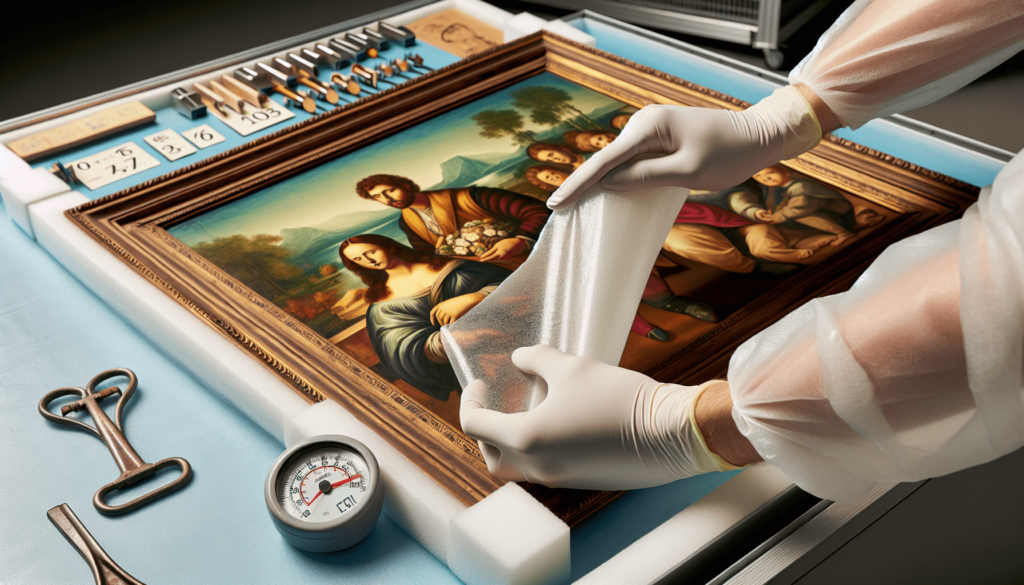
Storage Containers and Wrapping
When storing oil paintings, it is essential to use the right materials.
Opt for acid-free materials
Always use acid-free containers and wrapping materials. Acidic materials can cause your painting to deteriorate rapidly, leading to discoloration and other damage.
Wrap paintings in acid-free paper or plastic
Wrap each painting individually in acid-free paper, then cover it with an additional layer of acid-free plastic to protect it from dust and humidity.
Use sturdy and protective containers
Store wrapped paintings vertically in sturdy and protective containers. Always consider the size and strength of the container to prevent squashing or damaging the paintings.
Avoid overcrowding the container
Do not put too many paintings into one container to prevent scratches or damage from the paintings rubbing together. Each painting should have enough space for breathing.
Positioning and Hanging
Proper positioning and hanging of your oil paintings can contribute significantly to their preservation.
Hang paintings away from direct heat sources
Direct and unstable heat sources can cause oil paintings to dry out and become brittle, resulting in cracks. Therefore, always hang your paintings away from fireplaces, radiators, vents, and any other direct heat sources.
Avoid high humidity areas
High humidity results in the expansion and contraction of the canvas, leading to a distortion of the painting. For this reason, it’s best to hang your artwork in spaces with controlled humidity.
Use suitable hanging hardware
For hanging, use hardware appropriate for the size and weight of the painting. Improper hardware can cause the painting to fall, resulting in catastrophic damages.
Ensure proper spacing between paintings
Avoid hanging oil paintings too close together. A suitable gap between paintings can help avoid potential damage from collisions.
Temperature and Humidity Control
Maintaining steady temperature and humidity levels can significantly prolong the life of your oil paintings.
Maintain consistent temperature
A constant moderate temperature is essential for the preservation of oil paintings. Significant temperature fluctuations can cause the materials to expand and contract, leading to brittleness or warping.
Keep humidity levels stable
Likewise, maintain a constant humidity level, preferably around 50%. High humidity can promote the growth of mold and mildew, while overly dry conditions can lead to cracking and flaking.
Use dehumidifiers or humidifiers if necessary
Implement the use of dehumidifiers or humidifiers if necessary to maintain the optimal humidity level for your paintings.
Insuring and Documenting
Documenting and insuring your artwork is crucial, especially if your paintings are valuable.
Get insurance for valuable paintings
Insurance coverage can help protect your investment in case of damage or loss. Make sure that the insurance policy covers various risks such as fire, theft, and accidental damage.
Take photographs of each painting
Photograph each artwork from different angles before storing them. This step can be useful in case you need to file an insurance claim or for future reference.
Keep records of their dimensions and condition
For each painting, keep a record of the dimensions and current state. Also, include any information about the artist and history of the painting if available.
Regular Maintenance
Regular maintenance of your oil paintings can hold off potential damage and ensure their longevity.
Dust paintings regularly
Regular dusting helps to prevent the buildup of dirt and grime on the paintings. Always use a soft brush and dust gently to avoid damaging the paint layer.
Inspect for signs of pests or mold
Frequently inspect your paintings for signs of mold and pests. Pests can damage both the painting and frame, while mold could stain and weaken the painting.
Reapply varnish if necessary
If the varnish layer appears to be wearing thin or displaying signs of discoloration, it might be time to consider reapplying. Always consult a professional when unsure about the procedure.
Address any issues promptly
Should any issues such as flaking, discoloration, or infestations be spotted, address them promptly before they escalate.
Professional Assistance
In some cases, it might be best to call in the professionals.
Consult an art conservator if needed
If you’re unsure about how to handle any issues related to your oil paintings, consult an art conservator. They are professionals trained to assess, preserve, and restore artworks in all mediums.
Consider professional storage facilities
For extremely valuable or delicate paintings, consider professional art storage facilities. These facilities offer controlled environments optimized for art preservation.
Seek expert guidance for restoration or conservation
Sometimes, paintings may require extensive restoration or conservation work. In this case, always turn to a professional conservator or restoration expert to ensure the job is done correctly.
